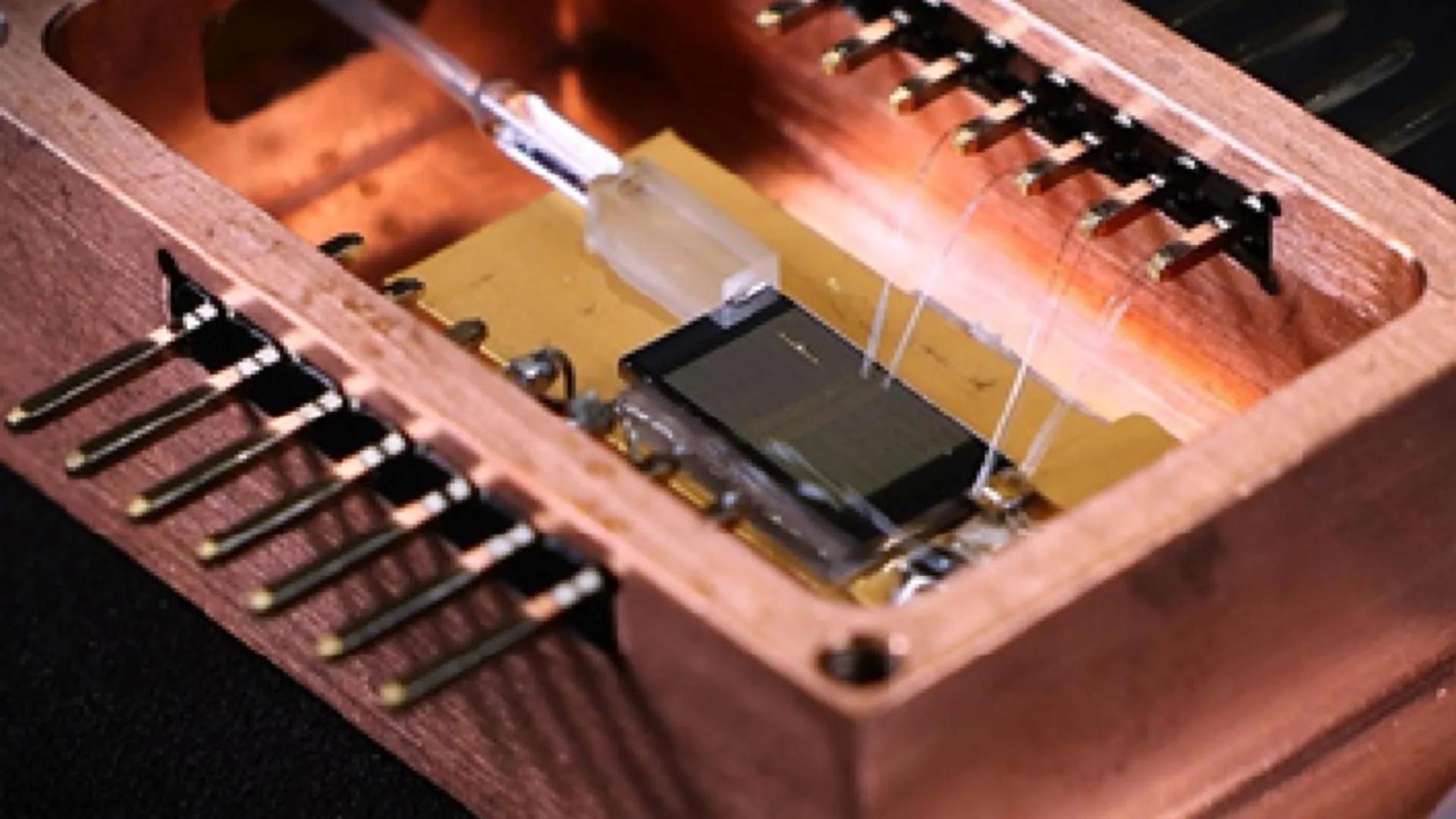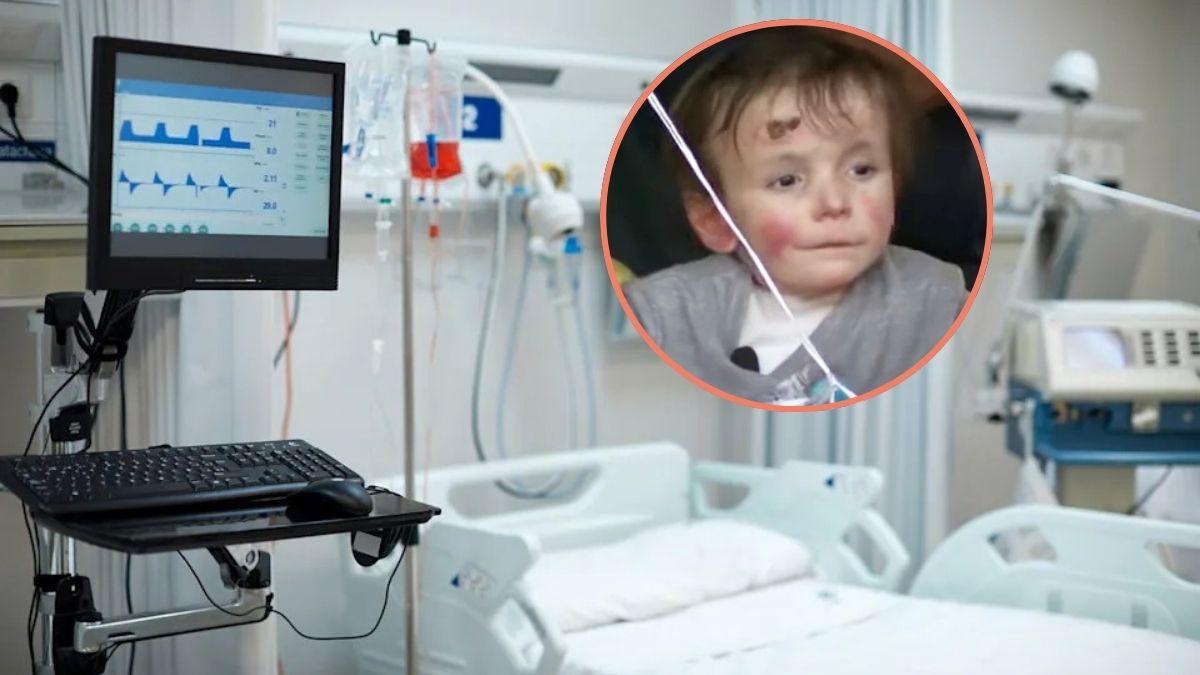Scroll For More

Score (98)
This Military Son Just Surprised His Mom At Her Graduation
A mom graduating with an associate degree in nursing received a surprise in the form of her active military son making a trip home to attend her graduation in West Lafayette, Indiana, in early May. The moment captured by Purdue Global shows Sebrina, the graduating mother, embracing her son Blane inside the graduation hall. “I had to pull some strings to get here… It’s been about nine months since I’ve seen my mom. After a month of not seeing me, she was sobbing. So, I can only imagine – it’s going to be something special,” Blane said in the video.

Score (93)
A Florida Teen Scored a Perfect 1600 on the SAT Exam, Eyes Future in Law
A Florida teen earned a perfect score on the SAT in September Sergio Attento achieved a total of 1600, the highest possible mark "When I walked out of it, I actually thought that I had gotten a couple questions wrong," the 17-year-old said A Florida teen has a bright future ahead of him — with an exciting achievement already under his belt. Sergio Attento recently earned a perfect score on the SAT, achieving a total of 1600, the highest possible mark, NBC 6 reported. Attento, a senior at MAST Academy at Florida International University (FIP) — a public magnet school — didn't initially think he had scored that high. "I was surprised," the 17-year-old told NBC 6. "When I walked out of it, I actually thought that I had gotten a couple questions wrong." Never miss a story — sign up for PEOPLE's free daily newsletter to stay up-to-date on the best of what PEOPLE has to offer, from celebrity news to compelling human interest stories. After Attento learned of his perfect SAT score, the first people he contacted were his mother and father. "Immediately, he called us, and was like, 'I don't know if this is real,' " Maria Paula Nuñez Attento told NBC 6 of Attento, her eldest son, adding: "We freaked out." The teenager took the SAT for the third time in September. His past attempts at the test, as well as several practice exams, are what he credits with getting him to now earn the perfect score. "By the last one, the mistakes that I was making were no longer things," he said, per NBC 6. "Me not understanding the material, but now it was things that, if you double-check that, you could get it right. So once you get to that point, that's when any score is possible." Attento is currently taking seven Advanced Placement (AP) courses at his school. He has also attended college courses at FIU's north campus. When he graduates from the Master of Science in Athletic Training institution, Attento will already have an associate's degree. The 17-year-old is currently sharing his knowledge and tutoring other students for the SATs. "You are now on the other end, asking it to somebody else," he told NBC 6. "When you're in that position, you get a better idea of the people writing the questions, what they're asking of you, what they want out of you." As for what the future holds, Attento told the local Florida outlet he is interested in pursuing a law career.

Score (97)
Think Like A Scientist Program Transforms Lives Through Critical Thinking
In a world where misinformation spreads faster than facts, a geophysicist is teaching people how to think more clearly—by embracing failure and asking better questions. Philip Heron, a professor at the University of Toronto’s Scarborough campus, has created a short but impactful course called Think Like a Scientist. Originally developed in the UK, Heron brought the program to Canada with a focus on teaching the scientific method not just to students, but also to people often left out of traditional academic spaces: incarcerated individuals. It’s only seven weeks long. But for some, the impact has lasted a lifetime. Dalton Harrison, who joined the first prison session of the course, says the experience reshaped his future. After his release, Heron invited him to give a talk at Durham University. “That moment changed my life,” Harrison said. “Standing in the front of that lecture hall, in a life I never dreamed was possible … that made me want to keep going in academia.” Today, Harrison is pursuing a master’s degree in criminology. Heron’s day job is in the Department of Physical and Environmental Sciences at U of T Scarborough, but every summer he brings Think Like a Scientist into Canadian prisons. His approach is simple: teach the scientific method in a way that doesn’t feel like a traditional classroom. “A lot of the folks I meet in prison have had really negative experiences with education,” Heron said. “So the first thing I try to do is take away the barriers.” That means no lectures, no tests, and no judgment. Instead, Heron focuses on open discussion. Participants explore topics like climate change, robotics, earthquakes, the science of sleep, and space missions—while constantly returning to one core idea: failure is not the end of the road. It’s the beginning. “Behind the scenes, scientists fail so often that it's just commonplace,” Heron told Quirks & Quarks host Bob McDonald. “What I want to teach students in prison, as well as students at the University of Toronto, [is] that failure is part of the process and it's something that should be accepted. We don't just fail and stop, we fail and move forward.” That message hits home for many incarcerated learners, who often come from backgrounds where early academic setbacks snowballed into life-altering consequences. Heron says many participants struggled in school due to systemic issues tied to race, class, learning differences, or neurodiversity. The program also draws unexpected connections between science and prison life. In one session, Heron shares a quote from Canadian astronaut David Saint-Jacques about managing mental health in space. The astronaut describes the psychological strain of being confined, isolated, and far from loved ones. “After I finish … the whole room is like, ‘That’s prison! Throw in terrible food and you’ve got prison. I could be an astronaut!’” It’s a moment that sparks laughter—but also reflection. For Phoenix Griffin, a former participant in the UK, the course opened the door to a completely new way of thinking. “The biggest thing I took away from it was the confidence to try new things,” said Griffin, who is now in her third year of university. “You learn from your mistakes so if you get it wrong it's fine. So that was really big for me.” Heron isn’t trying to turn everyone into scientists. His goal is to help people think like one. Ask questions. Challenge assumptions. And most of all, accept that progress doesn’t happen without missteps. He says the scientific method—observe, hypothesize, test, fail, and try again—is just as useful in daily life as it is in the lab. And in the most unlikely of places, that idea is taking root.

Score (97)
A Rare Kangaroo Joey Was Born at a Children's Zoo in Nebraska, Just the 3rd Born This Year
There’s a tiny, furry reason to celebrate at the Lincoln Children’s Zoo. A Matschie’s tree kangaroo joey has been born at the Nebraska zoo, one of just three born this year across all AZA-accredited zoos in the United States, according to an announcement shared on October 16. The joey, whose sex has not yet been determined and who hasn't been named, was born in April to parents Judie and Bexley. Right now, it’s still spending most of its time tucked away in its mother’s pouch, but keepers say visitors may start seeing it poke its head out more often in the coming months. “This is one of only three born this year in AZA-accredited zoos,” the zoo wrote in a Facebook post, referring to the Association of Zoos and Aquariums. “The joey currently spends most of its time inside mom's pouch, but will start to venture outside of the pouch more and more over the next few months.” Matschie’s tree kangaroos, native to the Huon Peninsula of Papua New Guinea, are classified as endangered by the World Wildlife Fund. Their population in the wild is shrinking due to habitat loss, hunting, and deforestation. With only small pockets of them remaining in their native rainforest habitat, each birth in captivity is a significant step toward protecting the species. The Lincoln Children’s Zoo is no stranger to tree kangaroo conservation. The zoo participates in the AZA’s Species Survival Plan and supports the Tree Kangaroo Conservation Program, which partners with local communities in Papua New Guinea to protect wild habitats and help preserve the species. “This joey is not just a big deal for us — it’s a big deal for the future of this species,” the zoo said. Matschie’s tree kangaroos are known for their mahogany-brown fur, cream-colored bellies, and strong limbs that help them navigate trees — an unusual trait for a kangaroo. Unlike their Australian cousins, they spend most of their time off the ground. In the wild, they typically live up to 14 years, though in captivity, they can live closer to 20. As herbivores, they feed mostly on leaves, fruits, and flowers. And like other marsupials, their young are born tiny and underdeveloped, spending several months growing in the mother’s pouch before fully emerging. The Lincoln Children’s Zoo hasn’t announced when the joey might make its first public appearance, but for now, fans can follow along for updates as the little one continues to grow. It’s a rare and welcome sign of hope for one of the planet’s most elusive and threatened animals.

Score (97)
New Cancer Treatment Shrinks Head And Neck Tumors In Six Weeks, Study Reveals
A new drug that can be delivered by a simple injection is showing powerful early results in treating patients with advanced head and neck cancer, offering new hope where few options remain. Doctors say the triple-action therapy, known as amivantamab, shrank or halted tumour growth in 76% of patients who had already tried both chemotherapy and immunotherapy without success. The results were presented at the European Society for Medical Oncology (ESMO) conference in Berlin. “To see this level of benefit for patients who have endured numerous treatments is incredibly encouraging,” said Professor Kevin Harrington, a professor of biological cancer therapies at the Institute of Cancer Research in London and consultant oncologist at the Royal Marsden NHS Foundation Trust. “This could represent a real shift in how we treat head and neck cancer – not just in terms of effectiveness, but also in how we deliver care.” A tough cancer to treat Head and neck squamous cell carcinoma (HNSCC) is the sixth most common cancer globally. Once it recurs or spreads, treatment options are limited, especially after standard therapies stop working. In the Orig-AMI 4 trial, funded by pharmaceutical company Janssen, researchers tested amivantamab on 86 patients across 11 countries, including the UK. All participants had recurrent or metastatic HNSCC and had already undergone immunotherapy and chemotherapy. The new treatment is a "smart drug" that targets cancer in three ways: It blocks EGFR, a protein that helps tumours grow. It inhibits MET, a pathway often used by cancer cells to resist treatment. And it stimulates the immune system to attack the tumour. Fast-acting and easy to deliver Unlike many cancer treatments that require long hospital infusions, amivantamab is administered as an under-the-skin injection. That makes it not only faster and more convenient, but potentially usable in outpatient clinics or even at home. “Unlike many cancer treatments that require hours in a hospital chair, amivantamab is given as a simple injection under the skin,” said Harrington. “This makes it faster, more convenient, and potentially easier to deliver.” On average, patients in the trial began responding to the treatment within six weeks. The average progression-free survival was 6.8 months. Most side effects were mild or moderate. One of the patients on the trial, Carl Walsh, a 59-year-old from Birmingham, had been living with tongue cancer that didn’t respond to previous treatments. He joined the trial in July. “I’m now on my seventh cycle of treatment. It’s working well so far and I’m very happy with the progress,” Walsh said. “Before starting the trial, I couldn’t talk properly and eating was difficult. But the swelling has gone down a lot, and I’m not in the same amount of pain I used to be in. Sometimes I even forget that I have cancer.” Researchers say it’s the first time a triple-action therapy like this has been tested for advanced head and neck cancer, and while more research is needed, early signs are promising. “This could be a breakthrough for patients who previously had few, if any, options left,” Harrington said.

Score (97)
New Laser Breakthrough Promises Cheaper, More Efficient Tech for Cars and Air Quality Detection
A team of researchers led by Associate Professor Johann Riemensberger at the Norwegian University of Science and Technology (NTNU) has developed a new type of laser that could dramatically improve technologies ranging from autonomous vehicles to air quality monitoring. The laser, detailed in a study published in Nature Photonics, is powerful, compact, affordable — and far easier to control than most existing models. “Our results can give us a new type of laser that is both fast, relatively cheap, powerful and easy to use,” said Riemensberger. The project is a collaboration between NTNU, the Swiss École Polytechnique Fédérale de Lausanne (EPFL), and the Swiss tech company Luxtelligence SA. Smaller, smarter, and more adaptable Today’s precision lasers often come with trade-offs: they can be bulky, expensive, or tricky to tune. The NTNU team’s laser sidesteps those problems using advanced materials and micro-sized optical circuits, allowing it to emit a stable and powerful beam with precise frequency control — all on a chip small enough to be mass-produced. “You can also easily control it with just one control instead of many,” said Riemensberger. The frequency can be adjusted quickly and smoothly, without the jumpiness seen in many conventional systems. That combination of simplicity and precision could unlock new use cases and significantly cut costs. How this helps self-driving cars and gas detection The new laser could be particularly useful in Lidar systems, the light-based sensing technology that self-driving cars use to detect their surroundings. By measuring the time it takes for a laser beam to bounce off nearby objects, or subtle changes in the beam’s wave phase, Lidar builds a detailed 3D picture of the environment. The new laser improves the accuracy of those measurements to within just four centimeters — a major leap for a system that often must navigate at high speeds in complex environments. In addition to mapping, the laser can be used to detect hazardous gases in the atmosphere. In one test, researchers showed that it could accurately identify hydrogen cyanide — a deadly compound even in small doses — in the air. Affordable innovation, ready to scale One of the most promising aspects of the new laser is that it’s built using existing chip fabrication technologies, making it feasible to produce at scale without needing new infrastructure. “Our findings make it possible to create small, inexpensive and user-friendly measuring instruments and communication tools with high performance,” Riemensberger said. The research builds on work that began when Riemensberger was a postdoctoral fellow at EPFL. The partnership continues under a European Innovation Council Pathfinder OPEN grant known as ELLIPTIC. With potential uses in communications, environmental safety, autonomous tech, and more, this could mark a major step forward for laser-based systems — one that doesn’t require sacrificing cost or convenience.

Score (98)
Scientists Achieve Breakthrough In Extracting Clean Drinking Water From Sea
Scientists in South Korea have developed a game-changing new way to turn seawater into clean drinking water — and it’s powered entirely by the sun. A team from the Ulsan National Institute of Science & Technology (UNIST) has unveiled a solar desalination breakthrough that not only produces freshwater efficiently, but does so without the carbon emissions typically associated with traditional desalination methods. Their technology, detailed in the journal Advanced Energy Materials, uses oxide perovskites — advanced materials that capture and convert heat into usable energy. That means the desalination process runs on solar power, sidestepping the need for fossil fuels and significantly lowering the environmental cost. "This work demonstrates a breakthrough approach to enhancing the efficiency and durability of solar desalination through advanced material engineering and smart design," the research team told Interesting Engineering. One of the most persistent problems in desalination is salt buildup, which can clog systems and reduce efficiency. The team tackled this by designing a one-directional fluid flow system that creates a salt gradient, essentially pushing the salt to the edges of the panel. As salt crystals accumulate, they’re moved out of the way, allowing sunlight to better reach the surface and maintain high evaporation rates. In lab tests, the system managed an evaporation rate of 3.4 kilograms of freshwater per hour — about 7.5 pounds — and maintained performance even in extremely salty water containing 20% salt, far more concentrated than typical seawater. “This breakthrough provides a practical and scalable solution to the global water scarcity crisis,” said Professor Ji-Hyun Jang, one of the lead researchers. That scarcity is growing. More than four billion people face water shortages at least one month a year, and climate change is only making things worse. Droughts, extreme weather, and shifting rainfall patterns are putting even more pressure on freshwater supplies. Desalination has long been seen as one possible answer, especially in coastal areas, but it comes with drawbacks. Traditional methods are expensive and energy-intensive, often powered by polluting fuels. This new solar-powered approach could change that. It’s not a silver bullet — experts, including those at the U.S. National Institutes of Health, warn that desalination needs to be carefully managed to avoid environmental harm. But the use of clean energy and improved design makes this approach a major step in the right direction. If scaled effectively, the technology could offer affordable, sustainable access to drinking water for communities facing chronic shortages. In a world where water is becoming increasingly precious, this might just be the kind of breakthrough the planet needs.

Score (96)
Husband And Friend Of Claire Lomas Raise Over £1m For Charity In Her Memory
Claire Lomas captured hearts across the UK when she completed the London Marathon in 2012 over 17 days — while paralysed — using a robotic suit. More than a decade later, the legacy she built has officially topped £1 million, thanks to two of the people who knew her best. On Sunday, Claire’s husband Dan Spincer and her best friend Stuart Hall completed the 10-mile Great South Run in Portsmouth — in wheelchairs — pushing the total she raised for spinal injury research past the £1 million mark. “I just want to keep Claire’s legacy alive and keep spreading the word that she was spreading and doing the great job that she was doing,” said a tearful Spincer at the finish line. Hall, speaking after the run, added, “I just think of her walking into a room or wheeling into a room with a massive smile and she just lit up a room. That’s my best friend. That’s who I’m missing now.” Claire Lomas, from Melton Mowbray in Leicestershire, became a high-profile advocate for spinal injury research after a 2007 horse riding accident at the Osberton Horse Trials left her paralysed from the chest down. She was 27 at the time. Refusing to let her injury define her, she began fundraising for the Nicholls Spinal Injury Foundation and quickly became a symbol of resilience and determination. Her use of a ReWalk robotic suit — a device with mechanical legs powered by motors, braces, and sensors — made her the first person in the UK to walk again with the aid of such technology. She used it to complete the London Marathon in 2012 and the Great North Run in 2016, earning the nickname “bionic woman.” She was chosen to light the Paralympic flame that same year and was appointed MBE in 2017. Claire died in 2024, five weeks after a tragic microlight crash in Jordan. At the time, she had raised £952,000 for spinal injury research. Spincer and Hall vowed to finish what she started, setting their sights on reaching £1 million in her memory. They launched a campaign involving three running events — all completed in wheelchairs. After successfully taking on the Great Manchester Run and the Great North Run earlier in 2025, Sunday’s final 10-mile effort in Portsmouth marked the end of their tribute series. Organisers confirmed that the £1 million milestone was officially reached before the event began. Family and friends joined in, with Claire’s daughters also taking part in the Junior and Mini Great South Run events on Saturday. Family friend Linda Nicol called it a “very emotional” day, saying, “Claire was just such a presence.” Hall says the work won’t stop now. “The campaigning will continue to the next million,” he said. For those who followed her journey from hospital bed to marathon course, Claire Lomas wasn’t just a fundraiser — she was a force of nature. Thanks to those who loved her most, that force is still very much in motion.

Score (98)
New York City Halloween Dog Parade Showcases Adorable Canine Costumes
Halloween came early for New York City’s four-legged residents on Sunday, October 19, as hundreds of costumed pups took over the East Village for the 35th Annual Tompkins Square Halloween Dog Parade — a beloved city tradition that continues to be equal parts chaotic, charming, and wildly creative. This year marked the first time the event was officially hosted by New York Dog Parade, a nonprofit dedicated to creating joyful, dog-centric experiences that also support local shelters. Founder Fern Watt called the parade “a celebration of dog-human friendship in a very silly way,” adding, “I also think the world can really feel very divided right now, and it’s hard to find things to agree on. For me, dogs are such a global unifier.” The 2025 edition had more going on than ever. With help from sponsor Stella and Chewy’s, the parade introduced an “activation block” offering free treats and pet-friendly activities for dogs and their humans. Another first? Four adoptable dogs from local shelters were named parade grand marshals, representing Pup Starz, Social Tees, and the ASPCA as they led the costumed procession down Avenue B. The parade kicked off at 1 p.m. with hundreds of pups — many in elaborate themed costumes — strutting their stuff past a cheering crowd. Among the furry celebrities was Bastian, the 2025 winner of PEOPLE’s World’s Cutest Rescue Dog Contest, who rolled along the route dressed as the Lorax in a bright orange costume full of fluff. Inside Tompkins Square Park, the fan-favorite canine costume contest returned in full force. Dozens of dog-and-human duos entered what Fern Watt dubbed “the Met Gala of the canine community,” bringing out a full spectrum of adorable, spooky, and downright bizarre Halloween looks. Some of the highlights: • A pup dressed as Harry Potter calmly walked beside three “dementors.” • A coven of witches showed off their “witch’s broom” — aka, a fluffy pup in costume. • One tiny flower-covered dog gave off serious Midsommar May Queen vibes. • A K-pop-inspired costume featured Jinu from Demon Hunters, with one very photogenic dog channelling the look. • A full group dressed as Courage the Cowardly Dog characters delighted 90s cartoon fans. • One very sleepy dog was tucked inside a bowl of noodles as part of a hilarious Ramen Dreams costume. • And a curly-haired pup disguised as a tater tot? Almost too cute to handle. There was also a dachshund named Justin Wiener, a nod to Justin Bieber, who had his own cheering section, and a Great Dane who pulled off “farmer chic” in a plaid flannel shirt. One of the most popular costumes was a play on the viral stuffed animal trend. Spectators were challenged to pick the real pup out of a pile of plush toys. Spoiler: it wasn’t easy. Even Taylor Swift got a subtle nod. One dog wore a costume inspired by Swift’s “The Fate of Ophelia” music video, with fans calling it the “Life of a Showpup.” For anyone looking to get inspired for their own dog’s Halloween look, the Tompkins Square Halloween Dog Parade remains a gold mine of ideas and proof that when it comes to creativity, dog owners do not hold back. To learn more about the event and other upcoming canine celebrations, visit nydogparade.org

Score (97)
Thousands Gather to Uplift Terminally Ill Boy with 'Butterfly Skin' Disease
A community in Kansas City, Missouri, came together in a powerful way to support a little boy facing an unimaginable battle. Three-year-old Tucker Langford, who suffers from a rare and incurable condition called recessive dystrophic epidermolysis bullosa (RDEB), was recently released from Children's Mercy Hospital into hospice care. On Saturday, October 11, thousands of people showed up to give him one thing he loves most: a parade filled with trucks, Jeeps, motorcycles, and emergency vehicles. Nicknamed “Tough Tucker” by his family, Tucker has lived with painful, blistering skin since birth. His condition — sometimes called “butterfly skin” because of the fragility it causes — affects fewer than 5,000 people in the U.S. It causes the skin to peel and blister at the slightest touch. Complications can include infections, malnutrition, and even skin cancer. His family had originally planned a small parade down their street to lift his spirits. But when the Kansas City Fire Department’s Station 10 caught wind of the idea, they helped turn it into something much bigger. “To all of our fellow first responders, motorcycle riders, Jeepers, car showers and hot rodders! Heads up! We need your help!!” they posted on Facebook. “Let’s give Tucker the final honor he deserves!” The post spread quickly, and the turnout was so overwhelming that the parade had to be moved to a larger venue. What followed was a scene filled with flashing lights, revving engines, and hundreds of vehicles parading in honor of one small boy. “When we were pulling [up to the parade], I was crying because seeing everyone supporting Tucker and our family means a lot to us,” his mother, Chandler Langford, told KSHB. Tucker’s grandfather, Rick Langford, said his grandson earned the “Tough Tucker” nickname for a reason. Doctors didn’t think he’d live past his first birthday. He’ll turn four on Christmas Eve. “I bet you he will show everyone how tough he is,” Chandler added. Tucker's love for trucks, emergency vehicles, and motorcycles was reflected in every part of the parade. Firefighters, paramedics, Jeep clubs, bikers, and classic car owners all showed up — not to mention crowds of cheering neighbors and strangers holding handmade signs of support. The event captured just how much Tucker has touched the people around him, even those who don’t know him personally. “Tucker is one of the best storytellers you will ever meet,” his family wrote in a GoFundMe set up to help cover his care. “He loves talking about his trucks, playing with his baby brother, and spending time with his family.” At birth, Tucker was missing skin on parts of his body, including his feet, hands, lips, and chest. Since then, he’s endured constant pain and intensive care — but through it all, he’s kept smiling. As of October 16, the GoFundMe campaign had raised over $40,000 of its $45,000 goal. Despite the heartbreaking circumstances, his family says they’re taking it one day at a time and holding on to the joy he brings. “He’s had that name since the very beginning,” Chandler said. “He’s Tough Tucker.”

Score (97)
This Recent College Grad Just Saved a Driver After a Seizure in a Montana Parking Lot
A quick-thinking recent graduate is being hailed as a hero in Montana after leaping into a moving car to save a driver suffering a medical emergency. Markus Klewin, 24, had just stepped out of a convenience store in Bozeman on the morning of October 6 when he noticed a vehicle circling erratically in the parking lot. At first, he thought someone was just goofing around. “I just walked out, and then I see this car kind of going around in circles,” he told local outlet KBZK 7. “At first, I just thought it was somebody doing donuts in the parking lot to be fun or whatever. Then it just kept going and going, and I was kind of freaked out.” When he got closer, he saw the driver slumped out of the open door. According to staff at the Town Pump store, the man was having a seizure. “[It was] kind of just natural instincts to jump in that car, slam on the brakes and try not to escalate the situation any further,” Markus said. Surveillance video shows the SUV spinning in reverse, its driver’s door flung wide open, while bystanders look on. Then, Markus steps into frame, jumps into the vehicle, and quickly brings it to a stop. After stopping the car, he ran back inside the store to call 911. Emergency responders arrived shortly afterward, and the driver is now recovering, according to Bozeman police and local media reports. Markus described the moment as a blur. “I didn’t honestly realize the car was going that fast,” he said. “I just kind of blacked out during the whole thing.” He walked away with a slightly injured ankle but shrugged off the attention. “I just like to thank God for putting me in that position in the first place,” he said. “Just being there in the right place, right time.” His dad, Kurt Klewin, said none of it came as a surprise. “He’s just always been one of those kids who goes out of his way to help people. He was an Eagle Scout,” he told PEOPLE. “He didn’t really want people to even know that it happened. He didn’t even tell me for three days!” Bozeman police praised his actions, crediting his fast response for preventing further harm. “His willingness to immediately jump into action without hesitation ensured that the situation ended without further harm to the driver or other citizens,” said Lieutenant Quinn Ellingson. Town Pump, where the incident took place, called it “heroic.” “Markus Klewin is an ordinary individual who, when confronted with this dangerous situation, took heroic action to save another person’s life,” the company said in a statement. “We are in awe of how quickly Markus responded and will make sure we supply him with some energy drinks.” Markus, a recent graduate of Montana State University, doesn’t see himself as a hero. “I think of myself as a guy who’s just trying to do the right thing,” he said. “But it feels good, though.”